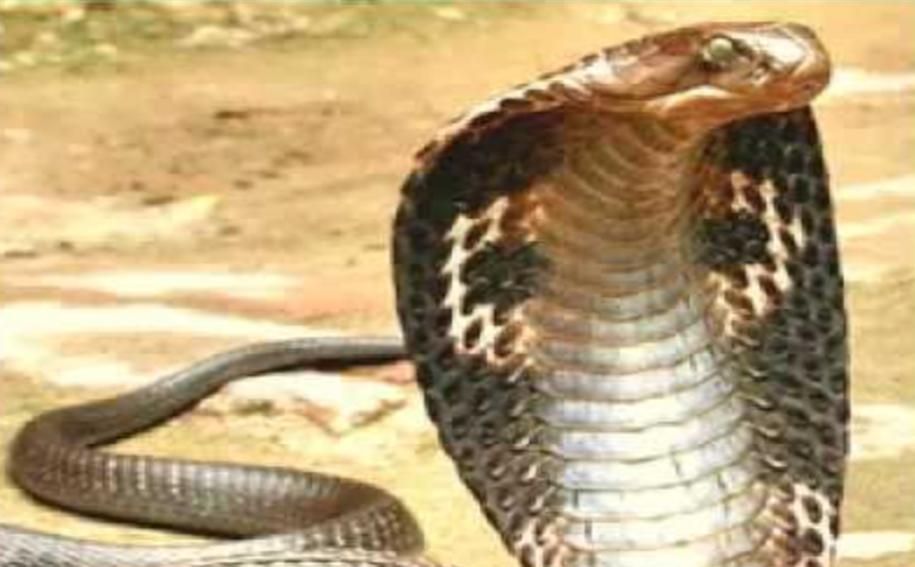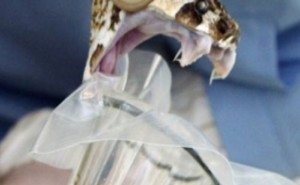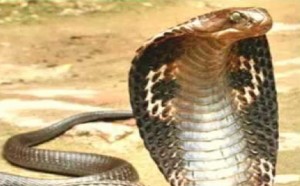
Are you bitten by a snake?

Snake bites kill 100, 000 people worldwide every year. There are a number of misconceptions about what to do immediately after being bitten by a snake. You should never try to suck or cut the venom out, but remain calm and not to panic.
Snake bites, particularly those that occur in the UK, are not usually serious and are very rarely deadly. Try to remember the snake’s shape, size and colour and keep the part of your body that has been bitten as still as possible to prevent the venom spreading around your body. You may want to secure the bitten body part with a sling (a supportive bandage) or a splint but not so tight that it restricts your blood flow. Remove any jewellery or watches from the bitten limb because they could cut into your skin if the limb swells. Seek immediate medical attention. You should not try to suck the venom out of the bite or cut the venom out of the bite, or rub anything into the wound or apply ice, heat or chemicals. Do not leave someone who has been bitten on their own or put anything around the bitten limb to stop the spread of venom, such as a tight pressure band, tourniquet or ligature – it will not help and can cause swelling, even if no venom has been released by the snake; it could also damage the limb, leading to the need for amputation. You should not also not to try to catch or kill the snake
If you are bitten by a snake you should visit your nearest A&E department, or dial 999 to request an ambulance if it’s a medical emergency. As a precaution, you may be asked to stay in hospital for at least 24 hours so your blood pressure and general health can be monitored.
Antivenoms are antidotes to snake venom and are used to treat more severe snake bites. Antivenoms are produced by injecting a small, non-life-threatening amount of snake venom into a large animal, usually a horse. The animal’s immune system produces antibodies. Antibodies are proteins that stick onto toxins and are capable of neutralising their effects. The antibodies are then taken from the animal (without harming it), purified and stored until needed.
In some people, antivenoms can trigger a severe allergic reaction called anaphylaxis, so antivenom should only be given by a qualified healthcare professional.
In cases where a snake bite is severe, and your blood pressure has fallen significantly, you may need intravenous fluids (into a vein in your arm). You may also need a blood transfusion if you have lost a lot of blood. In most cases, children bitten by an adder will make a full recovery in one to two weeks. Adults usually take more than three weeks to recover fully, with a quarter taking between one to nine months.
During the recovery period, you may experience episodes of pain and swelling in the area of your body that has been bitten. These symptoms can usually be controlled by taking over the counter painkillers, and continuing to exercise the limb. Snake venom is made up of several hundred proteins which all have a slightly different toxic effect on the human body. One snake’s poison may not be like another’s, even if they are from the same species. But, on the whole, there are two main ways snakes make us suffer – by attacking the circulatory system (ie. the blood) and/or the nervous system.
Haemotoxic venom goes for the bloodstream. It can trigger lots of tiny blood clots and then when the venom punches holes in blood vessels causing them to leak, there is nothing left to stem the flow and the patient bleeds to death.
Other venoms can increase blood pressure, decrease blood pressure, prevent bleeding or create it. They are all bad news.
Neurotoxic venom tends to act more quickly, attacking the nervous system and stopping nerve signals getting through to the muscles.
This means paralysis, starting at the head, moving down the body until, if untreated, the diaphragm is paralysed and the patient can’t breathe. A classic sign of this is ptosis, when people can’t keep their eyes open.
Around the area of the bite, necrosis can set in. That happens when the venom destroys nearby muscles, tissues and cells. Long-term, this can lead to amputations, the loss of the use of a limb or the need for multiple skin grafts.
Snakes get closer to humans and cause more damage and more deaths than any other venomous animal, including spiders, scorpions and jellyfish.
Each year, up to five million people worldwide are estimated to be bitten by snakes. Out of those, around 100,000 die and 400,000 are left disabled or disfigured by their injuries.
But the numbers could be even larger – because many of the worst-affected countries don’t keep data on snakebites and research into this problem is scarce.
Anti-venoms are life-saving antidotes to snake bites are made by extracting venom from snakes then injecting it diluted into sheep or horses, which build up antibodies against it.
These antibodies are then separated from the animal’s blood and used to make anti-venom.Anti-venoms are expensive and only produced in limited quantities. Few ordinary people can afford them and governments and health officials have shown little interest in training medical personnel to diagnose and treat venomous snake bites.
Anti-venoms which have been proven to be safe and effective are rare. But experts are still unsure whether a single, universal anti-venom (which targets many types of venom from different snakes) is better than separate anti-venoms which target specific snake species in specific regions. Both are probably worth having.
Snake venom is a white or yellow-coloured liquid which is produced in glands behind the snake’s eyes and is pumped down a duct to the fangs when it bites down on something or someone.
The fangs acts like a hypodermic needle, injecting the venom quickly and efficiently into the unsuspecting victim.
Snakes with fangs at the front of their mouths are most dangerous – such as the cobra, puff adder, viper, rattlesnake and mamba, for example.
The venom produced by the snake’s ancient ancestor was relatively simple. But research suggests that it has diversified over time and now venoms are more complex and more toxic than ever before.
Venoms can vary, even within snake species and within the same country, causing different effects on the body and responding differently to the same anti-venom.
There are plenty of myths about how to deal with being bitten by a snake, so don’t be fooled.
There is no evidence at all that sucking out venom from a snakebite with the mouth or using any other suction device helps. In fact, experts say it could hasten the venom’s passage into the bloodstream.
Cutting out the venom is not recommended either because it could make the wound much worse.
In some countries, especially in remote areas where health services are scarce, natural remedies are often used to try to treat the bites but this only delays how long it takes to get to hospital.
After a bite, victims should not move the affected limb unless they have to, keep their heart rate as low as possible until they reach hospital and receive the appropriate anti-venom treatment, ideally as quickly as possible.
Snakes tend to move around more in hot, dry weather.
World Health Organisation, has developed a number of resources directed at improving access to good quality anti venom, and improving the clinical management of snake-bite.
India’s first national survey of the causes of death, the Million Death Study, undertaken in 2001-03 by the Registrar General of India and the Centre for Global Health Research gives an estimate of 46,000 annual deaths by snakebite. There are four species groups of snakes (of the nearly 300 different species in India) primarily responsible for what is likely to be the highest death rate from snakebite in any country in the world, the ‘Big Four’: cobra (four species), krait (eight species), saw-scaled viper (two subspecies) and Russell’s viper. All are widely distributed throughout most of the country although areas like the far Northeast, the Himalayan region and the Andaman’s and Nicobar Islands have distinctive snake fauna.
The venom for producing anti-venom comes mainly from the Irula Snake-catchers Industrial Cooperative Society at the Madras Crocodile Bank on Chennai’s East Coast Road.
The Million Death Study puts it in a nutshell: “Snakebite remains an underestimated cause of accidental death in modern India. Community education, appropriate training of medical staff and better distribution of anti-venom, especially to the 13 states with the highest prevalence, could reduce snakebite deaths in India.”
The Madras Crocodile Bank Trust and Centre for Herpetology (MCBT), in collaboration with scientists at the Indian Institute of Science (IIS) and National Centre for Biological Sciences (NCBS) and the Global Snakebite Initiative has begun a project that will initially concentrate on Russell’s viper which is responsible for many serious and fatal bites. Venom will be collected from ten different geographic areas around India, quickly frozen using a new GSI-developed protocol and then transferred to toxinologists at the Indian Institute of Science for studies of how effectively it is neutralised by Indian anti-venoms.

